Contents
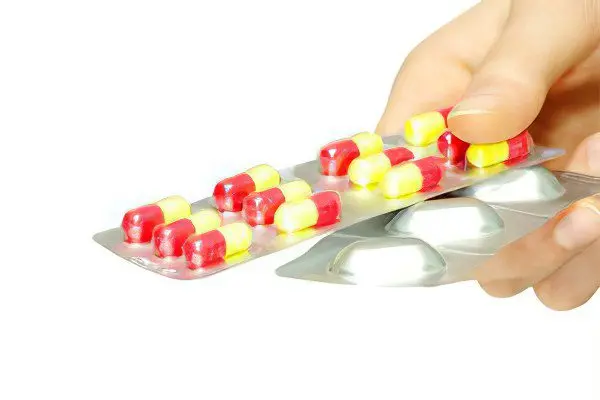
Opisthorchiasis is a parasitic disease provoked by flat helminths from the class of flukes. The invasion is accompanied by damage to the hepatopancreatobiliary system with fever, skin rashes, abdominal pain and jaundice.
Opisthorchiasis is a very relevant disease for Russia. There are endemic areas in the country where this helminthiasis occurs very often. Opisthorchiasis is widespread among the population living near the basins of the Volga, Irtysh, Ob and Kama rivers. There, opisthorchiasis is the most common helminthiasis in the general structure of parasitic invasions. Although about 30 species of opisthorochs are found in nature, only three types of parasites can live in the human body, including: Opisthorchis felineus, Opisthorchis viverrini and Opisthorchis felineus arvicola.
Opisthorchiasis is a natural focal disease; under natural conditions, infection is maintained by the circulation of parasites among wild animals that feed on fish.
The worm has two intermediate hosts: freshwater molluscs of the bithyniidae family (first host) and fish (second host).
A human, cat, dog, pig, fox, otter and other wild fur-bearing animals can become the final owner of opisthorchis.
Helminths are small, no more than 2 mm wide and no more than 10 mm long. Therefore, they can live in the intrahepatic and extrahepatic bile ducts, as well as in the pancreatic ducts. A person becomes infected after eating raw, dried, salted, smoked or poorly processed fish. A month after the invasion, the helminth turns into a sexually mature individual and begins to reproduce eggs.
The more parasites in the human body, the more pronounced the symptoms of the disease. Also influenced by the age of the patient and the state of his immunity
The main signs of opisthorchiasis are:
Intoxication of the body.
Allergic manifestations.
Disorders of the digestive system such as hepatitis, cholecystitis, pancreatitis and cholangitis.
neurological symptoms.
Nonspecific symptoms of opisthorchiasis include:
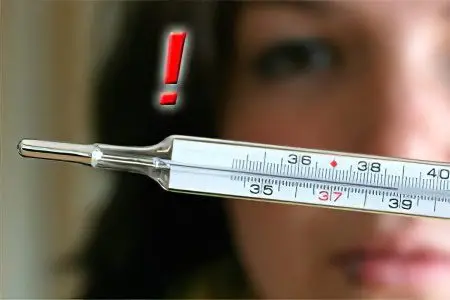
An increase in body temperature to high values. Subfebrile body temperature is rare.
Loss of appetite, pain in muscles and joints.
The appearance of a small rash like papules or dots. Eruptions are localized on the chest, on the back and on the arms. After 10 days, the rash disappears without any treatment.
Possible occurrence of pronounced allergic reactions, the development of asthmatic bronchitis, Quincke’s edema, Lyell’s syndrome, acute myocarditis, etc.
Since the parasites live in the ducts of the liver and gallbladder, the following symptoms will be observed from the hepatobiliary system:
Pain in the region of the liver and gallbladder.
Pain can be given to the right shoulder blade and to the collarbone.
The appearance of nausea and a feeling of bitterness in the mouth, belching and vomiting.
The development of jaundice with an increase in the level of bilirubin in the blood more than three times.
Enlargement of the liver in size.
Skin itching.
Children often have symptoms of enterocolitis and gastritis. If there is no treatment, opisthorchiasis becomes chronic. At the same time, it becomes more difficult to suspect the disease by any symptoms.
Signs of the chronic form of the disease are:
Chronic pain of aching nature and moderate intensity. Pain is localized in the gallbladder, in the epigastric zone. If the pancreas is affected, then the pain becomes girdle.
Often a person is concerned about dyspeptic disorders with flatulence, heartburn and nausea.
The skin and whites of the eyes turn yellow, or acquire an earthy hue.
The liver increases in size.
A person loses weight, his fatigue increases, there is an aversion to food.
The long course of opisthorchiasis is dangerous because the patient may develop cancer of the liver and pancreas. Therefore, the disease requires timely detection and high-quality treatment.
Basic principles of treatment of opisthorchiasis

The approach to the treatment of patients with opisthorchiasis should be comprehensive. Drug correction is reduced to the appointment of the drug Praziquantel, which has a wide spectrum of anthelmintic activity. After taking the drug inside, the musculature of the worms is affected, as a result of which they lose their mobility. Absorption into the systemic circulation occurs rapidly, traces of Praziquantel are present in breast milk. Against the background of kidney pathologies, the excretion of Praziquantel from the body slows down.
The daily dose is 40-75 mg / kg, it is divided into two or three doses. After completing the course of treatment, monitoring of its effectiveness is mandatory. To do this, after 3-6 months, feces and the contents of the duodenum are taken from the patient in order to detect opisthorchia eggs.
Praziquantel is not prescribed to people with diseases of the organs of vision, since after the death of the worms, blindness may develop. If therapy was started during the acute period of the disease, then after taking Praziquantel, severe allergic reactions may develop, which are associated with the mass death of parasites. Sometimes the manifestations of allergization of the body are so pronounced that patients are prescribed the introduction of hormonal drugs.
Praziquantel is not used to treat women in the first trimester of pregnancy. As needed, it can be prescribed to get rid of opisthorchiasis of nursing mothers. However, it will not be possible to apply to the child’s chest for 2 days after taking the therapeutic dose of the drug.
Since after taking the drug, a person may develop dizziness, he should refuse to drive vehicles while taking Praziquantel and for another day after completion of treatment. Particular care should be taken by those people whose work requires increased concentration.
The drug is not used to treat children under the age of 2 years. After taking Praziquantel, side effects such as headaches and dizziness, muscle weakness, fever and urticaria may develop. Most often, adverse events are of mild or moderate intensity, therefore, specific therapy is not needed.
It is equally important during treatment and for six months after its completion to adhere to a dietary diet. To do this, you must follow a diet number five. Patients are forbidden to eat spicy, pickled, salty dishes, as well as muffins. All products must be boiled, baked or steamed.
Stages of treatment of opisthorchiasis:
Preparation stage. Before you start taking anthelmintic drugs, you need to prepare the body. For this, the patient is prescribed choleretic drugs. In parallel, the reception of antispasmodics, adsorbents and hepatoprotectors is shown. The duration of the preparatory stage is 10-20 days.
Deworming stage. At this time, the patient takes the drugs prescribed by the doctor. Self-treatment is unacceptable. Also, you should not interrupt the course you have begun without the permission of the doctor, or change the therapeutic regimen.
Recovery stage. Since a large number of dead worms accumulate in the ducts, cholagogues are prescribed to patients. This will allow you to quickly remove them and the body. To protect the liver, patients are recommended to take hepatoprotectors. Dietary supplements and vitamin-mineral complexes. They allow you to quickly restore the body after an invasion.
The results are monitored after six months, since it is impossible to evaluate the effectiveness of treatment earlier. It is during this time that the eggs of parasites will leave the body and the digestive organs will restore their work.
List of pills for opisthorchiasis
Cysticide
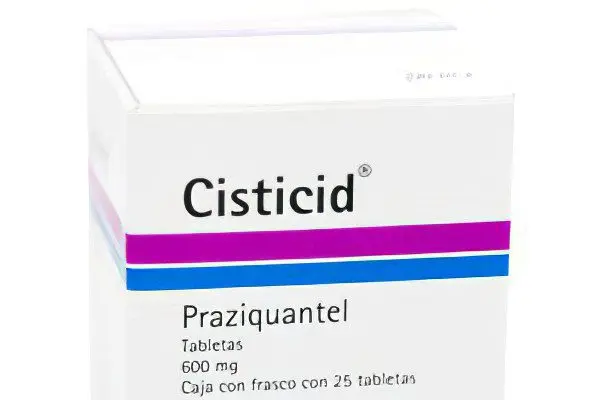
Cysticide is a drug based on praziquantel. Belongs to the group of anthelmintic drugs with a wide spectrum of action. Cysticide is available in the form of tablets.
Cysticide leads to persistent paralysis of helminths with their subsequent death.
Do not use the drug in the first trimester of pregnancy, as well as for the treatment of children under 4 years of age. Breastfeeding women are also contraindicated in taking Cysticide. With caution, it is necessary to treat patients with hepatic insufficiency and with hepatosplenic schistosomiasis with the drug.
For the treatment of opisthorchiasis, a one-day intake of Cysticide will be required, at the rate of 75 mg / kg. The daily dose is divided into 3 doses.
Perhaps the development of such side effects as: vomiting, nausea, diarrhea, abdominal pain, drowsiness, dizziness and headaches. It is not excluded the development of allergic reactions, increased sweating.
Biltricide
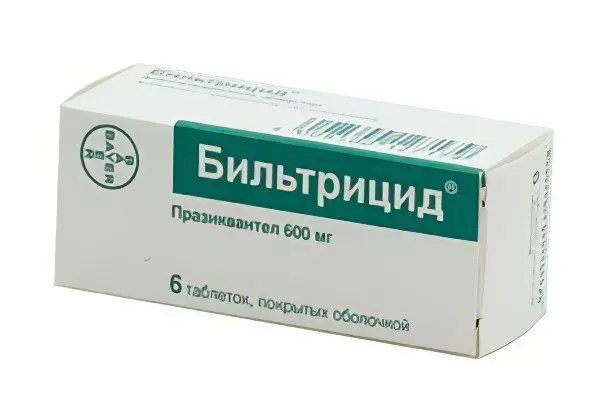
Biltricid is an anthelmintic drug available in tablets. The main active ingredient is praziquantel.
Do not prescribe Biltricid to the following groups of patients:
patients with cysticercosis of the eye;
children up to 4 years;
patients treated with Rifampicin;
women in the 1st trimester of pregnancy;
women during lactation (with a short course of treatment, breastfeeding should be stopped for two days);
in the presence of hypersensitivity to the components of the drug.
With caution, it is recommended to take Biltricid against the background of liver failure, with heart rhythm disturbances and with hepatolienal schistosomiasis.
For the treatment of opisthorchiasis, the drug is prescribed at the rate of 25 mg / kg of body weight, 3 times a day. The course of treatment can last from one to three days.
The following adverse reactions may develop:
Drowsiness, headaches, dizziness, convulsions;
Increased body temperature, asthenia;
Pain in the muscles;
Arrhythmia;
Urticaria, polyserositis.
Chesol
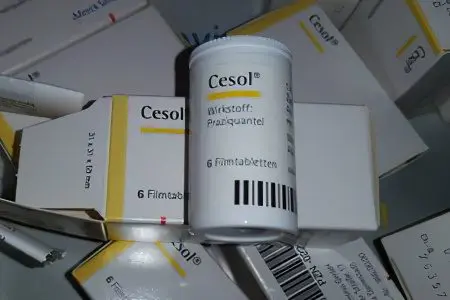
Cesol is an antihelminthic drug based on praziquantel. Cesol is produced in the form of tablets for oral administration.
Contraindications: pregnancy, hypersensitivity to the components of the drug, age under 4 years, ocular cysticercosis.
Tablets are taken whole, without chewing and drinking water. For the treatment of opisthorchiasis, the daily dose is 75 mg/kg. It must be divided into three steps.
Undesirable reactions from the nervous system are possible in the form of dizziness, headaches, convulsions, increased drowsiness. Also, allergic reactions are not excluded, which can be triggered by taking Cesol or the death of helminths.
It should be used with caution in patients with hepatic insufficiency, as well as on the background of schistosomiasis.
Azinox
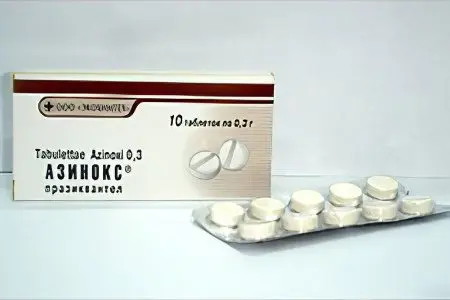
Azinox is an anthelmintic drug, a derivative of pyrazinisoquinoline (praziquantel). The drug has a wide spectrum of action against helminths.
Azinox is not prescribed for hypersensitivity of patients to praziquantel, in the first trimester of pregnancy, for children under 4 years of age. Do not use the drug for the treatment of patients with cysticercosis of the eyes and liver, as well as against the background of liver failure.
A single dose is 10-50 mg/kg of body weight. A more accurate dosage and duration of treatment is determined by the doctor.
After taking the drug may develop headache, dizziness, increased drowsiness. Sometimes there are pains in the muscles and in the abdomen. Nausea, vomiting and allergic reactions may also join. An increase in body temperature is not excluded.
Bithionol
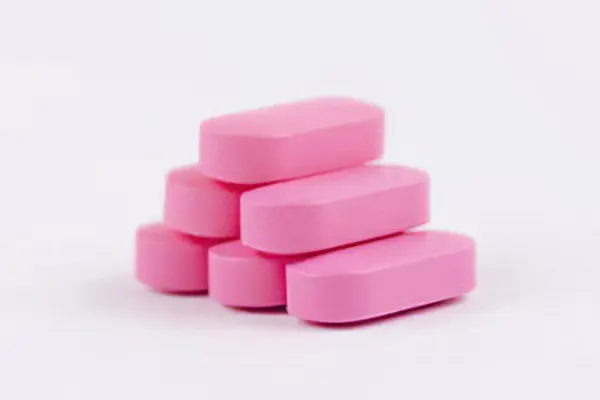
Bitionol is an anthelmintic drug produced in the form of a powder packaged in plastic bags. The drug has a paralytic effect on the neuromuscular system of worms.
A single dose for adults is 30-50 mg / kg. Take the drug orally, after meals. The duration of treatment and a more accurate dosage is determined by the doctor.
The following side effects may develop: fever, leukopenia, insomnia, diarrhea, abdominal pain, headaches, dizziness, nausea, anorexia, skin rash.
Do not prescribe Bitionol to children under the age of 8 years, as well as to people with any diseases in the decompensated stage.
It should be noted that modern parasitologists do not use Bitionol to treat people, since this drug provokes the development of pronounced side effects. It is used to treat helminthiases in veterinary medicine.
Chloxil
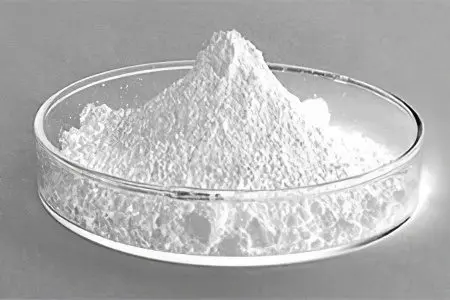
Chloxil is an anthelmintic drug produced in the form of a powder. A suspension is made from the powder and taken orally. Chloxyl is a derivative of xylene.
Chloxil is not prescribed for liver diseases (provoked by non-helminths), with myocardial damage. It is not used to treat pregnant women, as well as against the background of hypersensitivity to the components that make up the drug.
The daily dose is 0,1-0,15 g/kg. The course of treatment leaves 2 days, during which time the patient can take from 10 to 20 g of the drug, depending on the doctor’s instructions.
If a 5-day course of treatment is expected, then the daily dose is reduced to 0,04-0,06 g / kg and given in 2-3 doses. Re-treatment is possible after 4-6 months.
Side effects: hepatomegaly, proteinuria, arrhythmia, eosinophilia, allergic reactions. You can not combine the drug with alcohol, with fatty foods.
Diet in the treatment of opisthorchiasis

The diet in the treatment of opisthorchiasis should be sparing for the digestive organs, but at the same time stimulating the secretory function of the pancreas and stomach. The amount of proteins, fats and carbohydrates should completely cover the physiological need of a person. It is important to stop eating fried foods, remove all foods containing refractory fats from the menu. There should not be on the table of a person undergoing treatment for helminthiasis, products containing cholesterol and purines.
Fruits and vegetables help to remove excess cholesterol and increase intestinal motility. The daily amount of kilocalories should be at least 2200 kcal, but not more than 2500 kcal, of which:
Carbohydrates – 300-350 g.
Proteins and fats – 80-90 g.
You can not eat hot and cold dishes, the number of meals per day is from 5 to 6. Products can either be boiled or baked.
It is possible to include the following products in the menu:
Juices based on fruits and non-acidic berries;
Kissel, compote;
unsalted tomato juice;
Weak tea and coffee with milk;
Rosehip decoction;
Yesterday’s bread, rye, doctor’s and wheat bread;
Mild cheeses, milk, cottage cheese, sour cream with a reduced percentage of fat content;
Vegetable, dairy, fruit soups;
Butter (no more than 50 g per day);
Unleavened biscuits;
Steam omelet (1 egg per day);
Honey, sugar, jam;
Loose cereals;
Lean meat, fish, poultry, dairy sausages;
Fruits and non-acidic berries;
Pressed caviar, soaked herring.
During the treatment of opisthorchiasis, you should stop eating the following foods:

Rich bakery products, fresh bread;
Salo, fats;
Meat, fish, mushroom soup;
Fatty meat, fish and poultry;
Fried and boiled eggs;
Smoked and canned foods;
Marinades and pickles;
Sorrel, radish, spinach, radish, green onion;
Spicy seasonings (horseradish, pepper, mustard);
Ice cream and any other chilled desserts;
Confectionery with fat cream;
Strong coffee, chocolate, cocoa;
Sour fruits and berries;
Alcohol;
Alcoholic drinks.
Be sure to check with your doctor about possible prohibitions during treatment for opisthorchiasis. Despite the abundance of foods that should not be consumed, it is important that all the physiological needs of the body are covered.
Prevention of opisthorchiasis

Prevention of opisthorchiasis is reduced to the following measures:
You should refuse to eat raw fish, expose any fish to high-quality heat treatment.
Fry fish or cutlets from it for at least a quarter of an hour in boiling oil.
Cook lumpy fish for at least 15 minutes after boiling.
It is good to salt the fish in a warm saline solution for 14 days. At least 270 g of salt is needed per kilogram of fish.
It is possible to rid the fish of parasites with the help of low temperatures. Helminths will die in 7 hours at a temperature of -40 °C, in 14 hours at a temperature of -35 °C, in 32 hours at a temperature of -28 °C.
It is good to wash your hands after any contact with fresh fish and carefully handle the items that were used for cutting it.
By following these rules, you can protect yourself from such a disease as opisthorchiasis.
Answers to questions on the topic “opisthorchiasis”
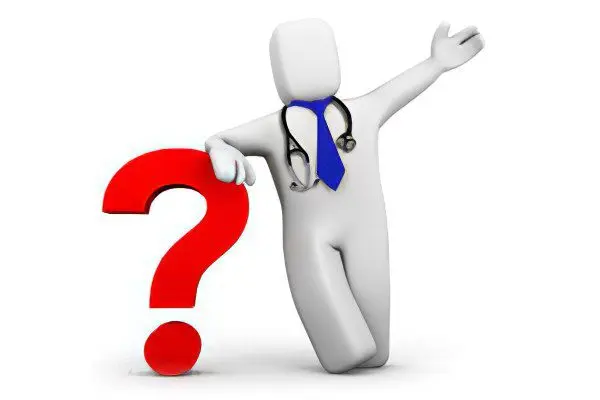
How to treat opisthorchiasis and which doctor to contact? Opisthorchiasis is a contagious disease, the methods of transmission of invasion are the use of fish that has not undergone high-quality heat treatment. Opisthorchiasis is treated by infectious disease specialists and parasitologists.
Is it necessary to treat opisthorchiasis in a hospital? There are symptoms such as: subfebrile body temperature, headaches, fatigue. Treatment was carried out by an infectious disease specialist, but at home. It was not possible to get rid of the disease. When can I take a re-test? Treatment of opisthorchiasis is carried out on an outpatient basis. The repeated deadlines for submitting an analysis for opisthorchiasis are determined by which diagnostic method is used for this purpose, as well as by what course of treatment the patient received.
The child is 6 years old. CEC-opisthorchiasis 1:10 was found in the blood. Antibodies to opisthorchiasis were not detected. How is it treated and what does it mean? If CEC is found in the blood, then this indicates an “old” helminthiasis. Therefore, it is necessary to carry out sounding with bile sampling for further research. If the diagnosis is confirmed, it is necessary to be treated, since opisthorchiasis can provoke serious complications.









